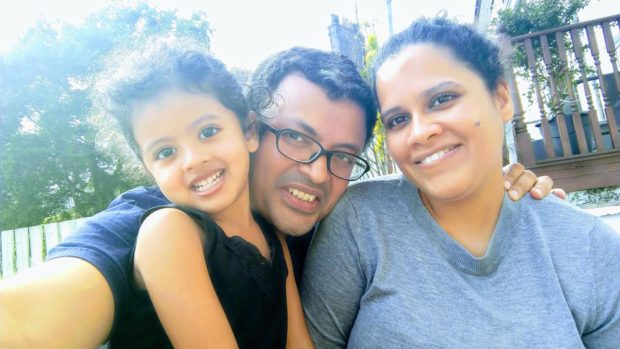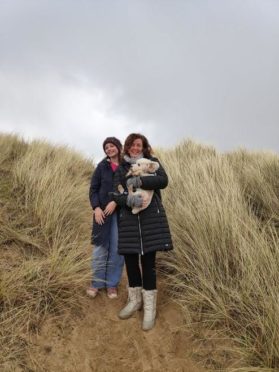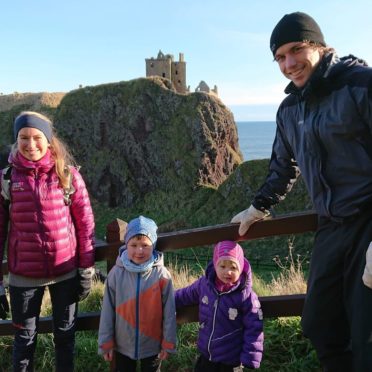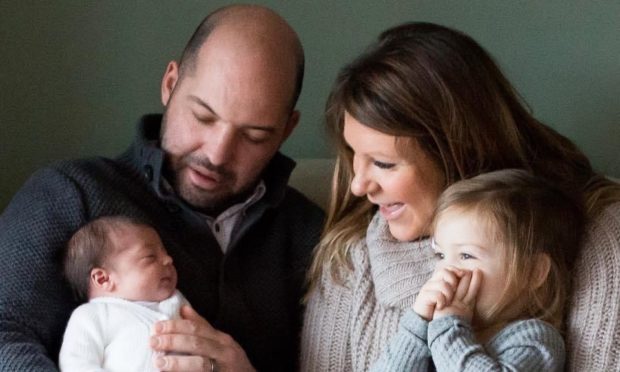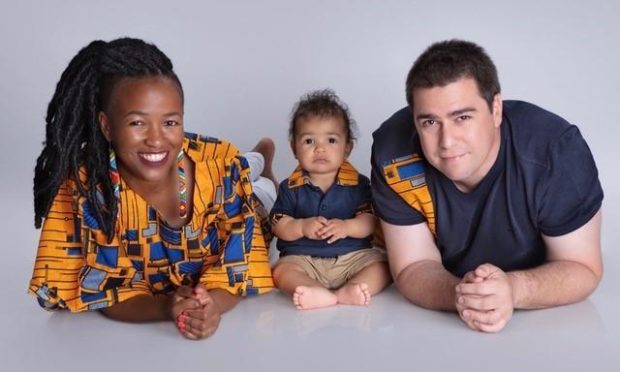Do we appreciate our schools enough in the north-east?
That is the question raised after people who have settled in the area from all four corners of the world had their say.
The Press & Journal spoke to ex-pats with children from as far afield as India, New Zealand, South Africa, Portugal, the USA and Norway.
And though their experiences in their adopted country haven’t always been plain sailing, one thing they are unanimous on is the quality of the education their children receive here.
As well as the overall quality of the curriculum and teaching, the range and choice of subjects came in for particular praise.
Fiona Wood, 49, is originally from New Zealand and lives in Banchory with 12-year-old daughter Emilia.
As a teacher as well as a parent, she has first-hand experience of the strength of north-east schools.
“I have been able to move to an area with good quality schooling – my daughter has a great education here,” she said.
“She is very happy in her secondary school.
“Her classes seem to be a lot smaller than mine were, and she has a massive variety of subjects every week with what looks like a well-rounded curriculum.”
Having lived with her daughter in China, Russia, UAE, Malaysia, England and now Scotland, Ms Wood is well-placed to compare our education system with others, and feels we should appreciate what we have more.
“I know there is concern in some areas, but having taught in England, I am very impressed with the resourcing, staffing and focus of schools here,” she said.
“England has gone down a very scary path of allowing unqualified teachers to work in their multi-academy trust schools, which had a terrible impact on my child’s schooling.
“I hope the Scottish Government don’t allow this model in Scotland.
“Teachers here are very well qualified and there are robust systems with the General Teaching Council for Scotland (GTCS) to ensure teachers are good enough for our children, which is the right thing to do – I say that both as a parent and a teacher.”
Shashi Krishna, 43, from India, lives in Aberdeen with wife Jaya and daughter Anahita, who is almost five.
“Even though my daughter is just starting out on her schooling, she has a lot more choice and input on a wider range of things than we did at her age.
“This is largely due to the open-ended and student-centric approach her school has taken so far.
“This has allowed her to be creative and express herself in different ways.
“In fact, the child-friendly nature of Aberdeen as a city and Scotland as a country has been a big reason why she has accepted this place so easily and enthusiastically.”
Catarina Bourlinova, 33, hails from the Azores in Portugal and has settled in Stonehaven, where her six-year-old daughter is thriving in Primary 1.
“I think the quality of education is great, I can see how much my daughter is learning and she doesn’t think school is a boring thing at all.
“I’m very happy with the choice to come here, because I think she will learn more and better here than she would on the island we came from.”
Julie Haabeth Brox, originally from northern Norway, also lives in Aberdeen, with husband Håkon and kids Sigurd, 6 and Maja, 3.
She said: “The biggest difference between Norway’s school system and Scotland’s is that they start school one year earlier here.
“That, we feel, is a big advantage.
“That, and the fact that the schooldays are much longer.”
Of course, there’s more to family life than school, and high up on expats’ list of positives were the north-east’s scenery, open spaces and work-life balance.
Kelly Breese, 31, moved to Aberdeen from Houston, Texas.
“My two daughters aren’t in school yet, but as far as lifestyle and upbringing are concerned, we chose to move here and raise our girls here because Houston was just too big,” she said.
“There we had more traffic, more pollution, no public transport where we lived, a 7am to 6pm work day mentality with no work-life balance, and limited outdoor accessibility due to the climate and the fact that it was a huge urban area.
“We chose Scotland for its natural beauty, safety – especially its ban on guns, slower pace of life, and smaller community feel.”
Nowhere is perfect, however, and some of the incomers to the north-east thought we were a tad distant socially, and could be a bit more spontaneous.
Aminah Bercot, 38, is from Johannesburg in South Africa, and lives in Aberdeen with her French husband Johan and their son Shaka, 2, who recently started nursery.
“There’s a certain amount of distance in the way people interact here, especially with people they don’t know,” she said.
“I find that back home, people are more relaxed with their kids – kids are more independent and play outside all day.
“Mostly no shoes and no routines.
“Everyone in our neighbourhood was like a second parent, from a very young age.
“The biggest thing that I would say my son is missing out on, that I had, is that sense of community.”
And Ms Bourlinova added: “A few times I’ve been out with my daughter and noticed that other families with children playing nearby tend not to come over and play with us.
“From what I can understand, play time between kids tends to be organized between mums.
“It’s not spontaneous like where I grew up.
“And there’s always supervision.
“I think parents could let their kids be a bit more spontaneous.”
